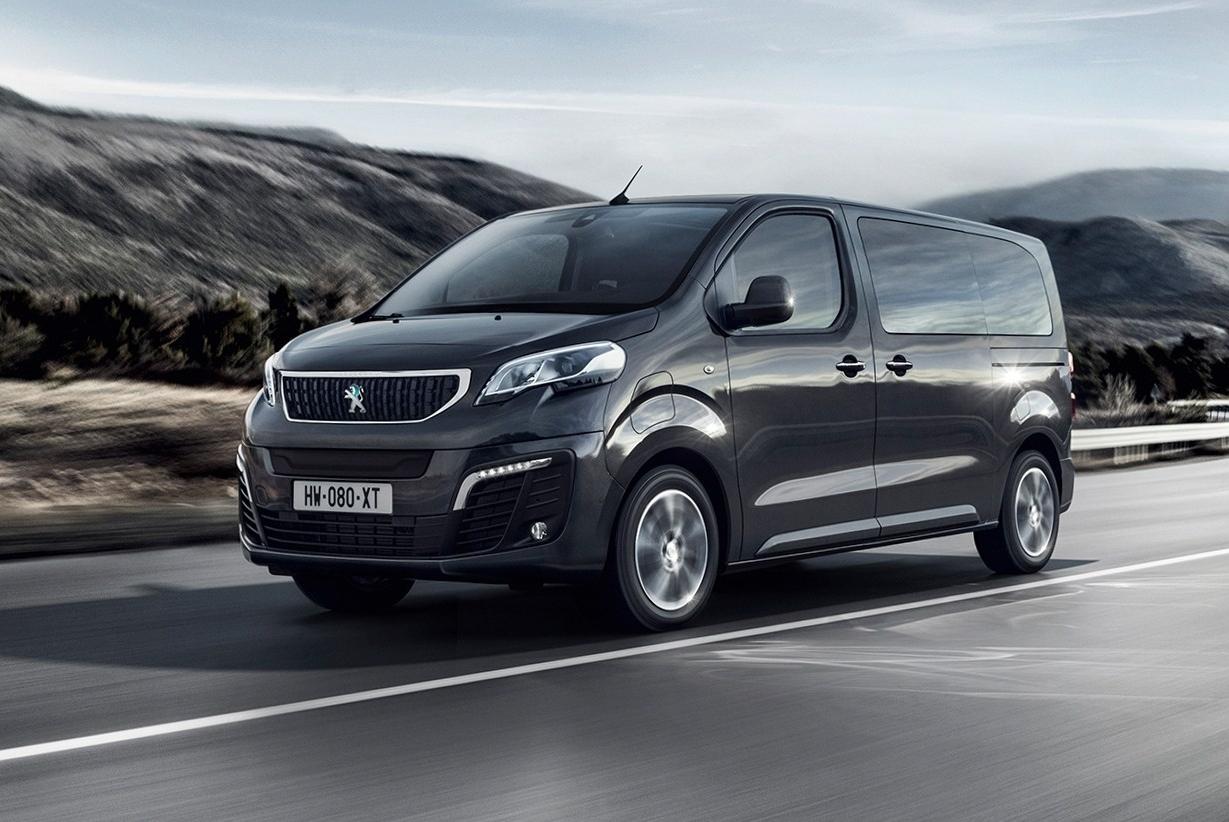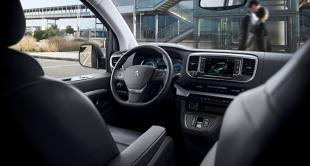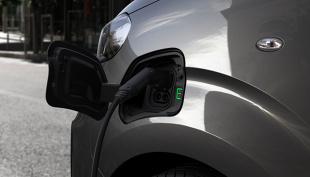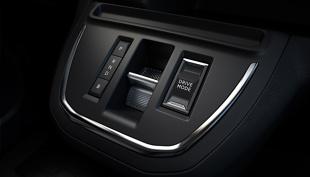
Peugeot e-Traveller. Electric van - specifications, charging, performance
Content
 The new Peugeot e-Traveler is available in various passenger configurations. There are two battery capacities and three case lengths to choose from.
The new Peugeot e-Traveler is available in various passenger configurations. There are two battery capacities and three case lengths to choose from.
The new PEUGEOT e-Traveler is available in various passenger configurations. It allows you to enter the center of cities with traffic restrictions.
The e-Traveler is available in two variants for passenger and leisure travel:
Versya Shuttle:
 For entrepreneurs and professionals in the field of passenger transportation (corporate and private taxis, hotel transport, airports…) in Business (5 to 9 seats) and Business VIP (6 to 7 seats) versions.
For entrepreneurs and professionals in the field of passenger transportation (corporate and private taxis, hotel transport, airports…) in Business (5 to 9 seats) and Business VIP (6 to 7 seats) versions.
Comfort for passengers who can comfortably take their seats in the cabin thanks to remotely opening side doors on the right and left. Privacy is guaranteed with tinted glass (70% tint) or very heavily tinted glass (90% tint).
Depending on the version, passengers in the second and third rows have sliding, independent leather seats with armrests or sliding seats with an aspect ratio of 2/3 - 1/3. A single control folds the seat and provides a wide transition to the rear seat.
See also: Top 10 ways to reduce fuel consumption
For the comfort of rear passengers, the VIP trim also offers a 4-seat or 5-seat cabin configuration, three-zone air-conditioning with soft-ventilation and individual-dimming glazed skylights for rear passenger comfort.
Combispace version
 The version dedicated to private customers is available in Active and Allure versions with 5 to 8 seats. The Combispace caters to the different needs of families, as well as outdoor and sports enthusiasts, with a variety of seating configurations that can be slidable or removable. Children can use the screens in the second row headrests and are protected from the light thanks to the built-in sunblinds.
The version dedicated to private customers is available in Active and Allure versions with 5 to 8 seats. The Combispace caters to the different needs of families, as well as outdoor and sports enthusiasts, with a variety of seating configurations that can be slidable or removable. Children can use the screens in the second row headrests and are protected from the light thanks to the built-in sunblinds.
The model also allows you to turn off the beaten track thanks to an extensive traction control system - Grip Control, which adapts to the type of surfaces encountered. The driver can select one of the following modes: Snow, Off-road, Sand, ESP Off using the knob on the dashboard.
As with the Shuttle version, access to the trunk is made easier by the opening rear window, which comes in handy when there isn't enough space in the parking lot to open the tailgate.
The new PEUGEOT e-Traveler is available in three body lengths:
- Compact, length 4,60 m;
- Standard length 4,95 m;
- Long, 5,30 m long.
An important advantage is the limited height of -1,90 m, which guarantees access to most car parks. The Compact version (4,60 m) is unique in this segment and can accommodate up to 9 people. Due to its compactness and maneuverability, it is ideal for the city. The turning radius between the curbs is 11,30m, making it particularly suitable for narrow streets and crowded city centres.
 The common feature of the various versions is the comfort and interior space available to all passengers, both front and rear rows 2 and 3. The new PEUGEOT e-Traveler offers maximum passenger space and can carry up to 9 people with a luggage capacity of 1500 people. liters or up to 5 people with a boot volume of 3000 liters and even up to 4900 liters thanks to removable 2nd and 3rd row seats.
The common feature of the various versions is the comfort and interior space available to all passengers, both front and rear rows 2 and 3. The new PEUGEOT e-Traveler offers maximum passenger space and can carry up to 9 people with a luggage capacity of 1500 people. liters or up to 5 people with a boot volume of 3000 liters and even up to 4900 liters thanks to removable 2nd and 3rd row seats.
Batteries are located under the floor and do not limit the amount of internal space.
e-Traveler offers a 100% electric motor with a maximum power of 100 kW and a maximum torque of 260 Nm, available from launch, for instant response to the accelerator pedal, no vibrations, no noise, no need to change gears, no exhaust smell and of course , no CO2 emissions.
The electric transmission is similar to that of the new PEUGEOT e-208 and the new PEUGEOT e-2008 SUV. The gearbox was modified with shorter gear ratios to handle the higher loads found in commercial vehicles.
The performance (in POWER mode) is as follows (tolerance data):
- maximum speed 130 km / h
- acceleration from 0 to 100 km/h in 13,1 seconds
- 1000 m with seats for 35,8 s
- acceleration from 80 to 120 km/h in 12,1 seconds
e-Traveler offers three driving modes that can be selected using a dedicated switch.
- Eco (60 kW, 190 Nm): increases the range,
- Normal (80 kW, 210 Nm): optimal for everyday use,
- Power (100 kW, 260 Nm): optimizes efficiency when carrying more people and luggage.
 The "Brake" function has two modes of engine braking to recharge the battery during braking:
The "Brake" function has two modes of engine braking to recharge the battery during braking:
- moderate - providing a feeling similar to driving a car with an internal combustion engine,
- enhanced - available after selecting position B ("Brake") by the gearbox control unit, providing enhanced engine braking, controlled by the gas pedal.
The new PEUGEOT e-Traveler is the brand's first electric passenger car to offer two levels of range. The mode of use determines the choice of range - the capacity of lithium-ion batteries is 50 kWh or 75 kWh, respectively.
The versions (Compact, Standard and Long), available with a 50 kWh battery, have a range of up to 230 km in accordance with the WLTP (Worldwide Harmonized Passenger Car Test Procedures) protocol.
The Standard and Long versions can be fitted with a 75 kWh battery providing a range of up to 330 km according to WLTP.
Combined with the interior heat exchange system, the battery cooling system ensures fast charging, optimized range and extended service life.
There are two types of built-in chargers for all applications and all charging types: a 7,4kW single-phase charger as standard and an optional 11kW three-phase charger.
The following types of charging are possible:
- from a standard socket (8A): full charge in 31 hours (battery 50 kWh) or 47 hours (battery 75 kWh),
- from reinforced socket (16 A): full charge in 15 hours (battery 50 kWh) or 23 hours (battery 75 kWh),
- from Wallbox 7,4 kW: full charge in 7 h 30 min (50 kWh battery) or 11 h 20 min (75 kWh battery) using a single-phase (7,4 kW) on-board charger,
from 11 kW Wallbox: fully charged in 5 h (50 kWh battery) or 7 h 30 min (75 kWh battery) with a three-phase (11 kW) on-board charger,
- from a public fast charging station: the battery cooling system allows you to use 100 kW chargers and charge the battery to 80% of its capacity in 30 minutes (50 kWh battery) or 45 minutes (75 kWh battery)
The electric van will go on sale in early 2021.
See also: This is how the new Peugeot 2008 presents itself
